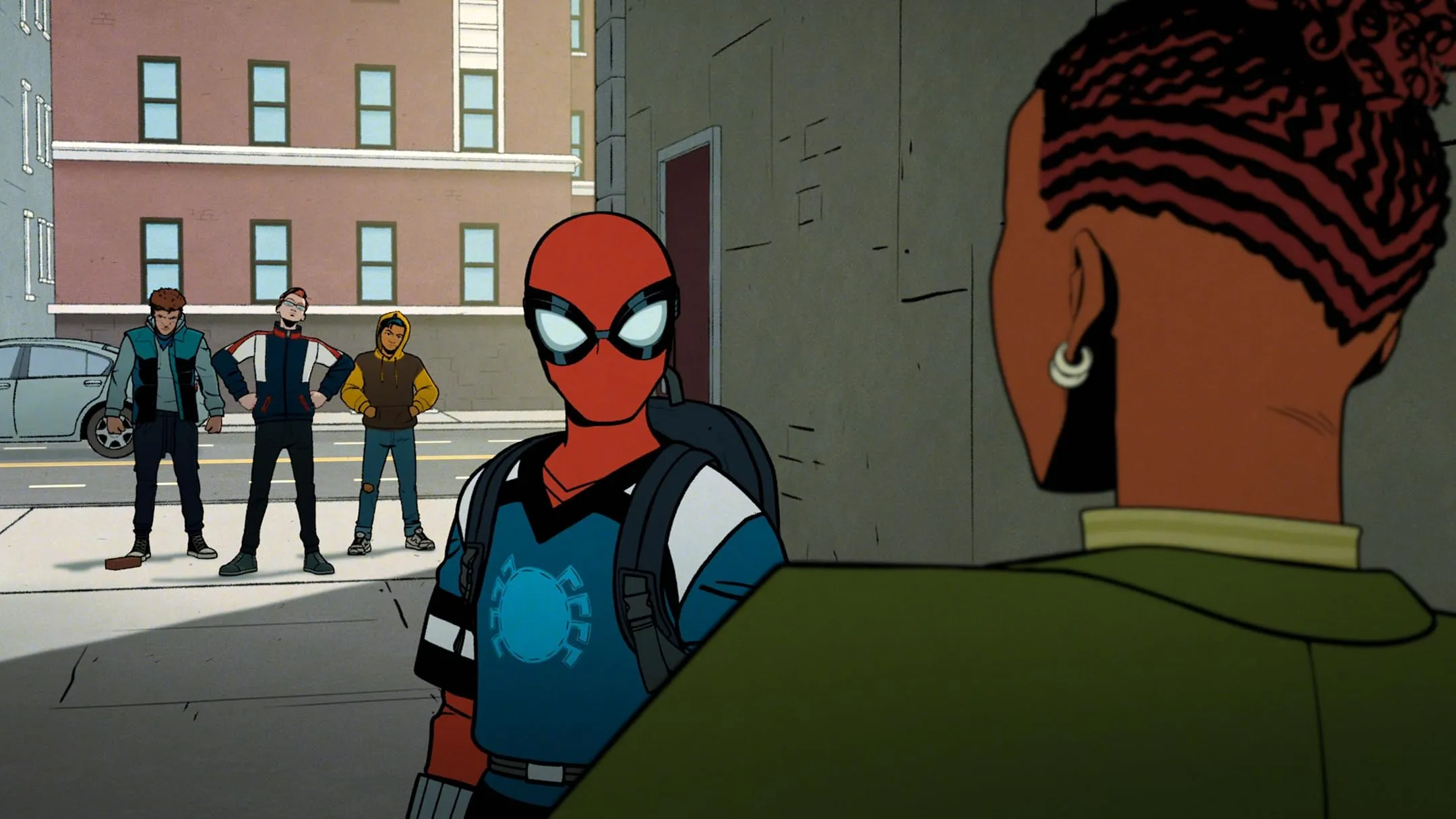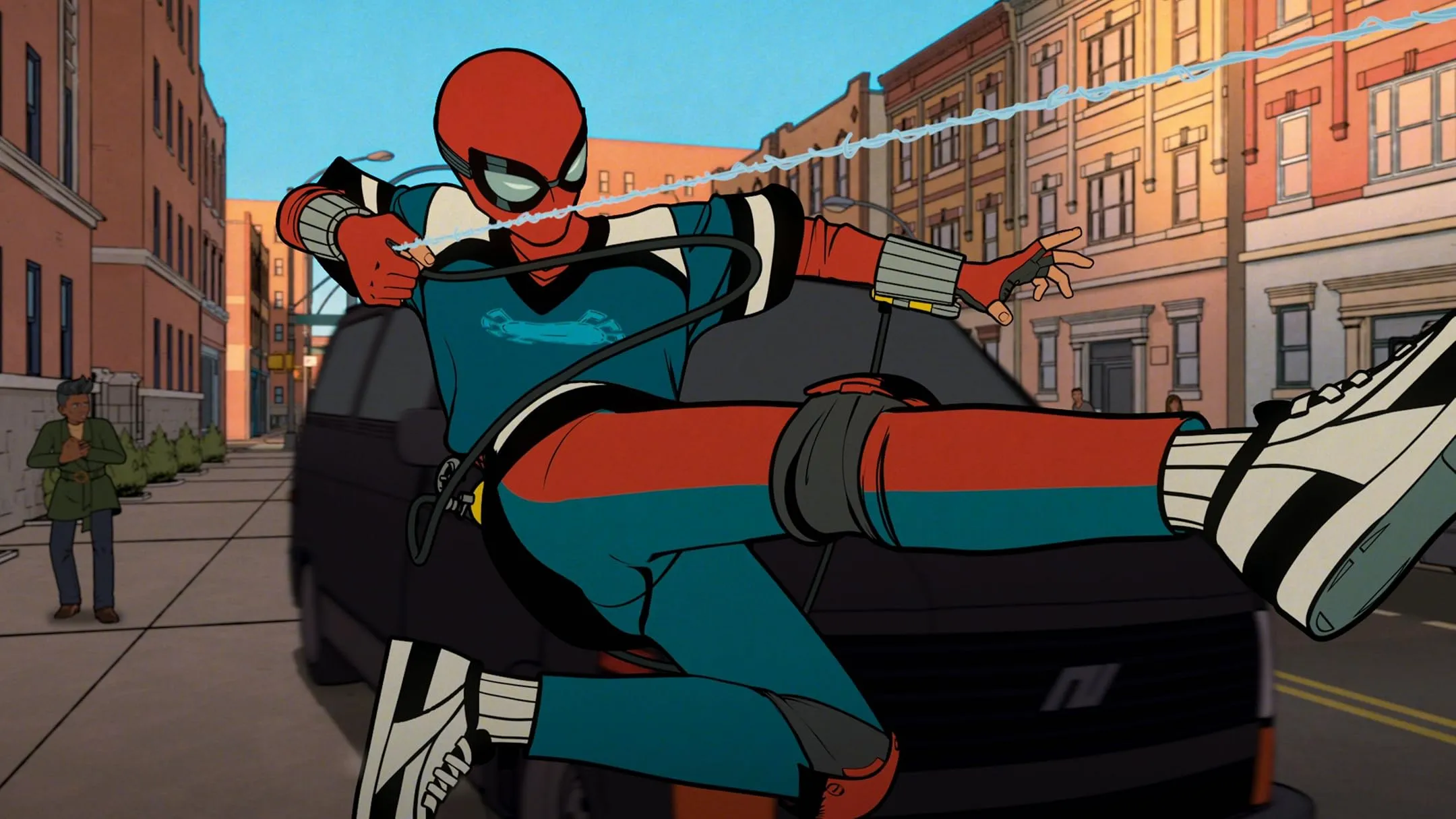The animated series “Your Friendly Neighborhood Spider-Man” offers a fresh perspective on Peter Parker’s story within the Marvel Cinematic Universe. Positioned after “Captain America: Civil War,” the narrative explores Peter’s teenage experience alongside his emerging superhuman abilities.
The show diverges from conventional storytelling, creating space for a nuanced examination of Peter’s character and the supporting individuals who shape his world.
Peter’s relationship with Norman Osborn instead of Tony Stark creates a provocative narrative twist. This unexpected connection challenges traditional superhero storytelling by presenting a complex mentorship that blurs lines between guidance and potential manipulation.
The series probes deeper psychological terrain, examining how influential figures can impact a young hero’s moral development and personal trajectory. Through this lens, the show reflects broader questions about power dynamics, personal growth, and the intricate ways mentorship can transform an individual’s path.
Character Development: A Web of Complex Relationships
Peter Parker emerges as a complex teenager in “Your Friendly Neighborhood Spider-Man,” embodying the struggles of youth with raw authenticity.
The series presents him as a freshman wrestling with newfound abilities and typical teenage challenges, creating a protagonist that speaks directly to young viewers. His journey focuses on balancing personal desires with unexpected responsibilities, striking a chord with audiences experiencing similar life pressures.
The supporting characters elevate the narrative significantly. Nico Minoru emerges as a compelling friend, bringing depth and magical elements to Peter’s world. Her character represents contemporary youth with her diverse background and strong friendship. Lonnie Lincoln breaks traditional character molds, revealing unexpected layers beyond typical high school stereotypes and confronting nuanced personal conflicts.
Norman Osborn creates critical dramatic tension as Peter’s mentor, presenting a relationship filled with psychological complexity. His character explores the gray areas between guidance and manipulation, challenging traditional hero-mentor dynamics. The series probes the intricate emotional landscapes of authority figures, revealing how leadership can be simultaneously supportive and potentially destructive.
By rejecting conventional superhero storytelling, the series crafts a raw, intimate exploration of teenage experience, power, and personal growth. Each character becomes a window into the multifaceted challenges of contemporary youth, transforming what could be a simple superhero narrative into a rich character study.
Animation Style: A Comic Brought to Life
“Your Friendly Neighborhood Spider-Man” captivates with its creative 3D animation style that merges cell shading and comic book art.
The visual approach pays tribute to iconic artists like Steve Ditko and John Romita Jr. The series uses a rich color palette and energetic framing that capture the spirit of classic Spider-Man comics while adding a modern touch. Each frame resembles a comic book panel, connecting viewers to Peter Parker’s world through an engaging visual narrative.
The animation technique introduces comic panel framing during action sequences, creating a playful experience that connects with audiences. While the approach brings excitement, it encounters some technical challenges. Sporadic pacing issues and frame rate drops can momentarily disrupt the viewing experience, potentially interrupting the story’s flow.
The animation technique effectively conveys Peter’s emotional landscape. By blending a spirited visual style with contemporary storytelling, the series explores new territories in animated storytelling. The visual approach creates an immersive experience that speaks to both long-time fans and new viewers.
Themes and Storylines: Weaving Responsibility with Realism
“Your Friendly Neighborhood Spider-Man” explores power and responsibility through Peter Parker’s complex journey. The show delves into the intricate challenges of a young hero navigating personal and societal obstacles. Peter’s experiences reflect deeper struggles with identity, economic pressures, and moral complexity.
The series presents a nuanced portrayal of teenage experiences, weaving personal conflicts with broader social dynamics. Peter confronts challenges that extend beyond typical superhero narratives, revealing the raw emotional landscape of youth. His struggles mirror the authentic experiences of young people grappling with expectations and self-discovery.
Narrative arcs unfold through carefully constructed episodes that highlight character growth and unexpected developments. Peter’s relationship with Norman Osborn creates dramatic tension, revealing layers of manipulation and trust. Each episode builds upon previous moments, creating a rich tapestry of storytelling that keeps viewers engaged.
The show transcends traditional superhero storytelling by presenting a multidimensional protagonist who wrestles with real-world complexities. Peter’s journey becomes a powerful exploration of personal growth, societal pressures, and the nuanced choices that define human experience.
Music and Sound: The Heartbeat of Parker’s World
“Your Friendly Neighborhood Spider-Man” uses its score and soundtrack to craft an engaging atmosphere that pulses with energy and emotion.
The musical selections weave together East Coast hip-hop styles with superhero storytelling, creating a vibrant soundscape that reflects the dynamism of Peter Parker’s world. Rhythmic beats and catchy hooks drive the narrative, immersing viewers in the experience of a high school student navigating superhero challenges.
Voice performances add depth to the auditory landscape. Hudson Thames portrays Peter Parker with infectious energy, capturing the character’s youthful spirit and vulnerability. Colman Domingo’s Norman Osborn stands out, delivering a performance that balances charm and intensity. The vocal interplay between Thames and Domingo illuminates their complex relationship.
Some supporting cast members deliver less memorable performances, revealing the challenges of creating a consistently compelling audio experience. Despite this, the series successfully blends sound, music, and voice work to create a compelling narrative that explores Spider-Man’s world through a fresh perspective.
World Building: A Living, Breathing City
“Your Friendly Neighborhood Spider-Man” paints New York City as a living, breathing entity. The series captures the city’s dynamic spirit through its vibrant streets, school corridors, and shadowy alleys. Peter Parker’s world feels tangible and real, connecting viewers deeply with his experiences.
The cast brings depth to the storytelling. Characters like Nico Minoru and Lonnie Lincoln break traditional molds, presenting complex individuals with rich backgrounds. They contribute meaningful perspectives that shape Peter’s journey and challenge standard narrative expectations.
Socio-political threads run subtly through the storyline. Economic challenges, social tensions, and community struggles are explored with nuanced storytelling. This approach invites viewers to explore deeper themes beyond typical superhero narratives.
The animation crafts a world that speaks to contemporary experiences. By presenting characters and scenarios that reflect current social dynamics, the series creates a powerful narrative that resonates with audiences. Peter Parker’s story becomes a lens through which viewers can examine broader human experiences, making the superhero journey both personal and universal.
The Review
Your Friendly Neighborhood Spider-Man
"Your Friendly Neighborhood Spider-Man" presents a fresh take on Peter Parker's story, exploring themes of personal growth and community impact through an animated lens. The series crafts a nuanced portrayal of its protagonist, connecting Parker's experiences with contemporary urban challenges. Vibrant animation and energetic voice work bring the character's world to life, creating an immersive experience that resonates with viewers. The narrative skillfully blends personal struggle with broader social contexts, offering an engaging interpretation of the Spider-Man mythos.
PROS
- Engaging and vibrant animation style that captures the essence of classic comic books.
- Strong characterization of Peter Parker and a diverse supporting cast.
- Relevant themes that resonate with contemporary societal issues and youth culture.
- Dynamic voice performances, particularly from Hudson Thames and Colman Domingo.
- Richly depicted New York City as an integral part of the story.
CONS
- Occasional pacing and frame rate issues in the animation detract from action scenes.
- Some supporting voice performances lack memorability compared to the main cast.
- Certain narrative elements might feel familiar to seasoned Spider-Man fans.




















































